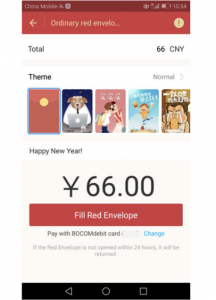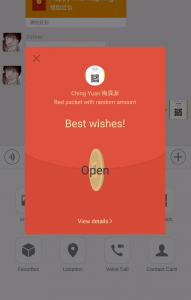With Chinese New Year a little over a week away, I know most of us are excitedly awaiting the parades, fireworks displays, incredible feasts and (admit it!) those lovely red envelopes and what’s inside them. The practice of giving hongbao on Chinese New Year has existed for centuries, and thanks to the ever-changing landscape of technology, it has evolved with the times. Popular apps like WeChat and AliPay have been offering users the option of sending their hongbao through the interwebs, and people are jumping at this more modern, convenient way of honouring the tradition.
For those not in the know, hongbao (in Mandarin) or lai see (in Cantonese) is an age-old Chinese practice of giving red envelopes containing money to relatives and friends (most commonly to kids from their parents and grandparents) on important occasions, especially the most auspicious Chinese New Year.

While the red packets (mostly ornately decorated with gold writing and design) contain money, the significance of the practice is the red paper and not what is inside. In Chinese culture, the colour red is highly regarded as a symbol of good energy, happiness and good fortune. Therefore, giving red envelopes on Chinese New Year to loved ones is a way of bestowing them with blessings, love and good luck for the new year.
The practice of hongbao is not just limited to China. Many other countries in Asia, especially Southeast Asia, like Singapore and the Philippines, also carry on the tradition.
While most people still prepare physical red envelopes to gift and take with them wherever they go (should they run into someone who they need to gift with one), cyber hongbao is a convenient possibility. As travel between countries is now much easier and more affordable, many friends and loved ones have moved to different parts of the world.
Popular apps like WeChat and AliPay have now made it easy to keep the practice going, despite the distance that separates people, by offering a service of sending virtual hongbao to friends and family across the globe.


It’s as easy as one-two-three.
One. Open the message screen of the contact you want to send a red packet to and select the red packet option.
Two. Input the amount that you want to send and add your own Chinese New Year greeting.
Three. Enter your password and send your hongbao!
WeChat or AliPay users will receive a similar notification that they have received a red envelope:

The practice of giving augmented reality red packets has become so popular as it is quick, easy and oh-so-convenient. For Chinese New Year 2018, 688 million people used WeChat hongbao to send money in red envelopes to family and friends all over the world.
Besides WeChat and AliPay, mobile app Baidu and online retailer Alibaba have also altered their services to include the sending and receiving of virtual red packets.
To keep up with the apps’ new service, many Chinese phone companies such as Huawei, Meizu and Xiaomi offer “red envelope assistants”, software that will help users’ “grab” their red packets easily, remind them to open ones they have received, and set alarms for sending them out, among other functions.
We live in an amazing era, where technology has bridged gaps of time, distance and age. The fact that we can, through a few simple clicks on our mobile phones, participate in the ancient tradition of hongbao on Chinese New Year, is something to celebrate in itself. /TISG

